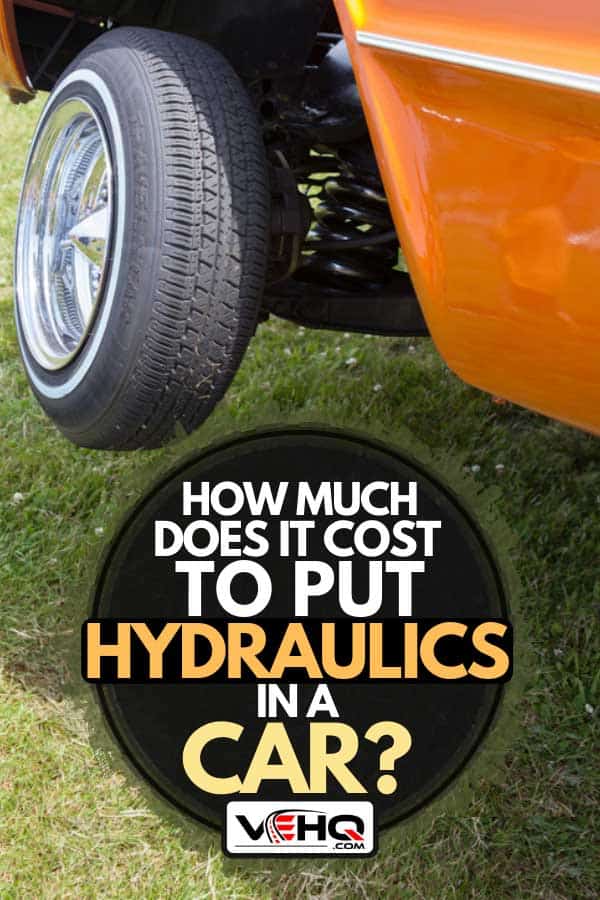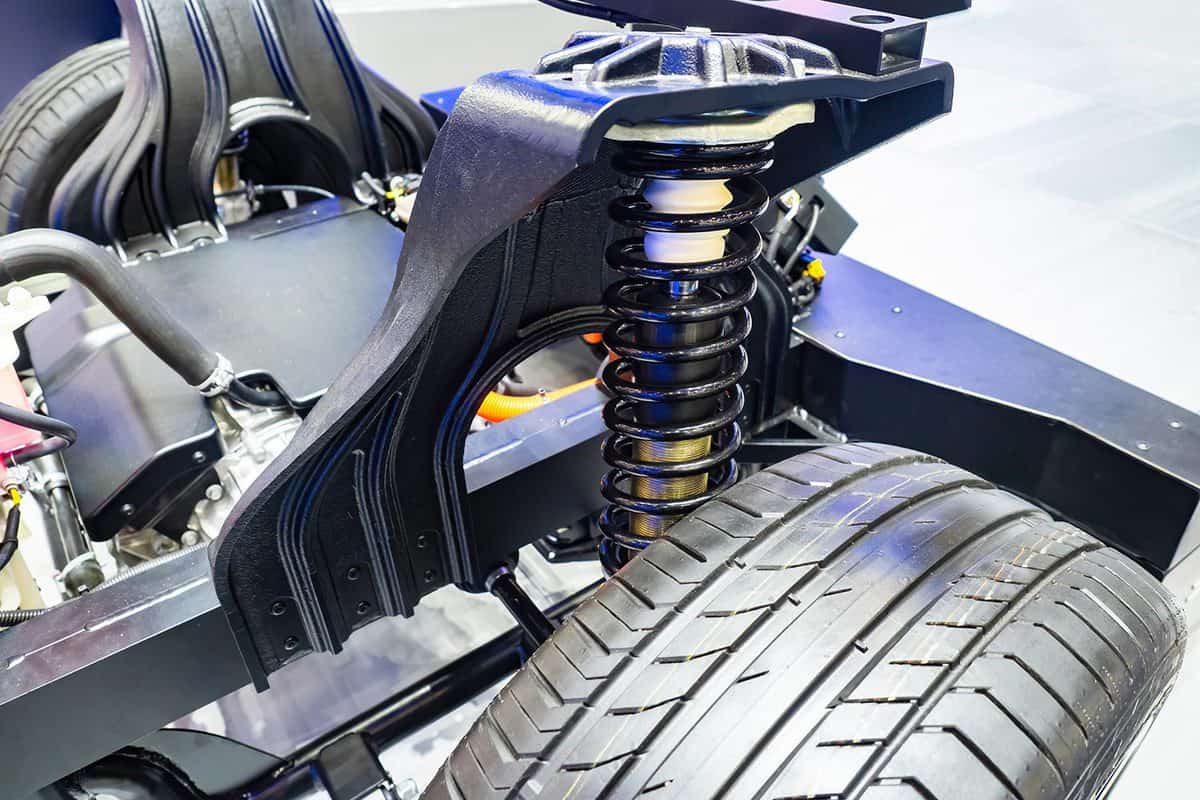Lowriders have been a vibrant way to express yourself in local communities for decades. But the price to buy and install a hydraulic system isn’t always clear. We looked into this niche community and found the cost of making and owning your own lowrider.
The cost of a hydraulic system depends on what you want to do with your car. For basic hydraulics that raise and lower your car with the push of a button, you’re looking at a starting cost of $600 for a one-cylinder DIY kit. If you want your car to jump, you’re looking at prices starting from $1,500 and up, especially if you hope to enter hopping competitions.
The world of lowriders and hydraulics is a heavily customized one. As a result, the price points can vary a lot depending on what type of ride you're looking for. Below, we go into more detail on hydraulics basics, what you can expect from a one-cylinder kit versus a four-cylinder, and what maintenance looks like for a lowrider.

Is car modification legal in the US?
Before we dive deeper into the price points and how hydraulics work, you’ll want to make sure that lowriders are legal in your state. Some states have laws that specify height requirements for vehicle frames, and you can be given a ticket for having an unsafe vehicle. We looked into the five largest states' vehicle laws, and here’s what we found about height requirements.
California
Lowriders originated from California to circumvent the legal height requirements for vehicles back in the 1960s. The current law states that you can’t have any vehicle parts (other than the wheels) sitting lower than the wheel rim's lowest part. As long as your frame doesn’t drop below that mark, your car is legal. Change the size of your rims and tires, so you have a lot more room to ride low.
Florida
Florida’s vehicle laws have specific height requirements for how far your headlights need to be from the ground. Headlights have to fall within the range of 24” to 54” -measured from the light's center to the ground. Tailight height is not specified.
On the flip side, there is a maximum bumper height in Florida. The max height depends on the vehicle’s weight class:
- 2,500-lbs or less, maxing out at 22” above the ground
- 2,500 to 3,5000-lbs at 24” front and 26” back
- more than 3,500-lbs allowing up to 27” front and 29” back.
These requisites don’t apply to new vehicles (unsold or untraded cars), hot rods, and antique cars, which are all defined on Florida’s government website.
Texas
Texas doesn’t have all the weight rules that Florida has, but the headlight height requirements are similar. All headlight heights need to fall between 24- and 54-inches. It would be best if you kept an eye on the taillights too, as they have to sit between 15- and 72-inches. Rear reflectors are included with a required height of 15- to 60-inches. Some other optional lighting systems have height requirements, which you can check out on the Texas government site.
Pennsylvania
The only law we found regarding vehicle height in Pennsylvania states that vehicles cannot be taller than 13’6”, and we don’t think that’ll be a problem for your lowrider.
New York
Like Pennsylvania, the State of New York only limits the vehicle's total height at 13’ 1”. It doesn’t mention a minimum frame height or range that the lights need to fall within, but you might have to check out their extensive weight limitations depending on your vehicle.
These laws are state-wide, so remember to check your local city or county for any additional ordinances that might affect your vehicle’s chance of passing a safety inspection. For more details, please read 16 Things That Will Fail A Car Inspection.
The Cost of Hydraulics
The cost of the hydraulics systems start at $600, and that estimate includes a DIY kit. It doesn’t even cover all of the other equipment needed to reinforce your frame or the chains that limit how far you can push the suspension. Buying a set of wire rims also goes a long way, and many consider it a necessary piece of the classic lowrider.
The majority of lowrider work is custom, so you’ll have to check your local shops to see what prices you’re looking at for labor costs. For each pump added, you’ll get some extra control over which wheels you can raise or lower and how high you can hop. Be ready to pay extra for it, with two-pump kits hitting around $1,100, three-pumps at $1,500, and a four-pump kit (one for each wheel), sometimes hitting the $1,800 mark or beyond.
Remember, these prices do not cover the labor costs either; you’d be installing it yourself at these prices. Sometimes it’s worth going to the professionals and paying the extra cash, but a big part of the lowrider community values building the system yourself and making it your own.
How does a hydraulic system work?
Hydraulic systems make use of hydraulic liquids funneled to the wheels through pumps. The vanilla suspension system is swapped out with expandable cylinders attached to each wheel. A tank stores the liquid until it’s ready, and then a signal from a connected battery pumps the liquid to the cylinders. Hydraulic liquids don’t compress, and the resulting force either raises the wheels or makes it jump off the ground entirely. The more batteries you have attached to the system, the faster the liquid will move, and the higher your car will jump.
The liquid is pumped out into an attached tank to lower the hydraulics, and the pressure lowers again at each wheel. The batteries that connect it all are usually stored in the trunk, so there is a lot less emphasis on the engine in lowriders than other car-enthusiast communities.
In this video below, a gentleman from Russell Harris Lowrider Hydraulics talks about a basic lowrider setup and how it works.
The number of pumps will also determine how many wheels raise or lower, and if the car can hop. A one-cylinder system will raise everything at the same time. Three cylinders are needed to start hopping, with four offering the best setup for hops.
If you don’t care about jumping or doing it competitively, you won’t need as many batteries. If big hops are what you want, then be ready to shell out cash for the extra electric power. Going the competitive-hops route will require you to buy some extra gear to keep your car frame intact.
Are hydraulics bad for your car?

Hydraulics will wear down your car’s suspension and undercarriage, but new techniques and technology have lessened the impact it will have on your car. Adding hydraulics tends to make the car harder to handle without the standard suspension system. The additional equipment needs to be checked regularly for any leaks or wear and tear. If you want a lowrider, you have to be ready to make some heavy repairs and do lots of maintenance.
Can any car be a lowrider?
While it’s not impossible for any car to be a lowrider, some are a lot easier to build than others. Most lowrider pros go for their dream car and build from the model they’ve always wanted in the first place. Others swear by classic sedans from long-standing brands like GM, Lincoln, and Chevrolet. The classics fit the typical lowrider aesthetic, but most people will tell you it’s about passion and expressing yourself. Keep in mind that many lowriders are sedans because a lighter frame will get you more air with less force.
Final Thoughts
Finding old models with easy-to-find parts keeps the repair costs low too. Some prominent names in the community have even built some of the best lowriders from just a shell. Now that we’ve covered the true cost of creating your own lowrider, you can start looking into How Much Does It Cost To Restore A Car if you want to go the DIY route.

How to install 16 switches on a 1991 Cadillac brougham